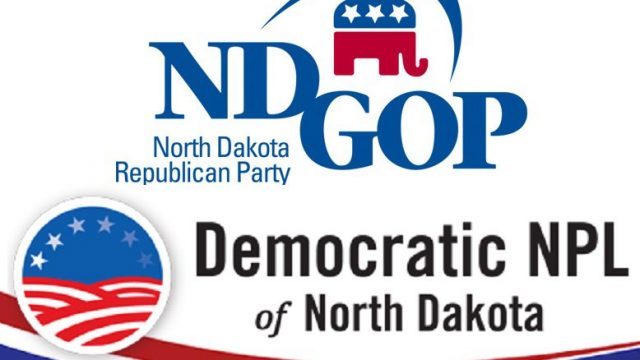Hundreds Of Activists Pack Republican District Conventions Across North Dakota

In his column today Mike Jacobs alludes to some interesting outcomes for Republican legislative races in three districts across the state:
In District 28, William Kretschmar—a long-serving member of the North Dakota House—was defeated. He’s regarded as too tolerant on social issues. Likewise in District 36, Alan Fehr lost to a candidate who presented himself as more conservative.
In District 10, Janne Myrdal, an anti-abortion activist, won a four-way race for endorsement for the state Senate.
I’m not sure that Jacobs has his intel quite straight on these races, though he’s right to flag them.
Fehr, who would have been running for his second term in the state House, certainly lost because he was perceived as being too soft for social conservatives. The man who beat him, Luke Simons, talked about his opposition to abortion and gay marriage. A District 36 Republican told me Fehr’s vote in favor of SB2279, legislation which would have added gays to the list of protected classes in North Dakota, was a big factor.
I’m told that Fehr may yet push that race to the June primary.
Kretschmar’s defeat, on the other hand, had a lot to do with his age I’m told. He’s currently 84, and has served in the state House since 1973 (with just one four year gap). There was a strong perception – right or wrong – that Kretschmar has been sort of mailing it in during recent legislative sessions. In a legislative race with five candidates in it, Kretschmar was the first candidate to lose out.
I’m told he’s not going to pursue the matter further.
I don’t think the loss had anything to do with his position on social issues as Jacobs claims (for what it’s worth Kretschmar voted against SB2279).
In District 10 Janne Myrdal was the favorite, and was endorsed by incumbent Senator Joe Miller who had announced that he wasn’t seeking another term. The race was a heated one because Curtis Olafson, who was a state Senator until Miller beat him in a post-redistricting race, had his surrogates out accusing local district officials of bias and an unfair process.
Olafson has never gotten over Miller beating him and has been a pot-stirrer in that district ever since.
The real story in these races, though, was how active these local districts are.
The District 28 convention, for instance, was held in Wishek, ND. That district is so large some people have to drive about 100 miles to attend their convention, one way. Yet that district convention had nearly 100 Republicans in attendance.
The Dickinson area Republicans had nearly 300 Republicans. And in Park River, where the District 10 race was settled, they had nearly 400 Republican activists on hand.
That’s pretty remarkable. I mean, contrast those numbers with this picture from state Rep. Ben Hanson (D-District 16) of the recent district convention put on by the Cass County Democrats:
Big crowd for @CCDemNPL district conventions! #NDPol pic.twitter.com/jL86TgV3qV
— Rep. Ben Hanson (@BenjaminWHanson) February 20, 2016
There are maybe, what, 100 people in that room? Representing Fargo-area Democrats?
Here’s Hanson’s photo of the District 16 convention. I count 11 people in the room, one of which is state Senator Tyler Axness who is running for re-election alongside Hanson this year:
Some more pictures from yesterday's endorsing conventions in @cityoffargo: #NDPol #NDLeg pic.twitter.com/xVsLgj1zn5
— Rep. Ben Hanson (@BenjaminWHanson) February 21, 2016
This speaks volumes doesn’t it?
Republicans have competitive races which attract hundreds of party activists even in rural communities. Democrats struggle to find candidates, and even a dozen people to attend their district conventions in the most densely populated and liberal part of the state.
Last week Jacobs tried to claim in his column that Republican electoral success in recent decades had to do with the party “stacking the deck” in terms of the electoral process. But is that really true?
If we judge the matter by how active the party grassroots are, it’s clear to see why Republicans are winning.




